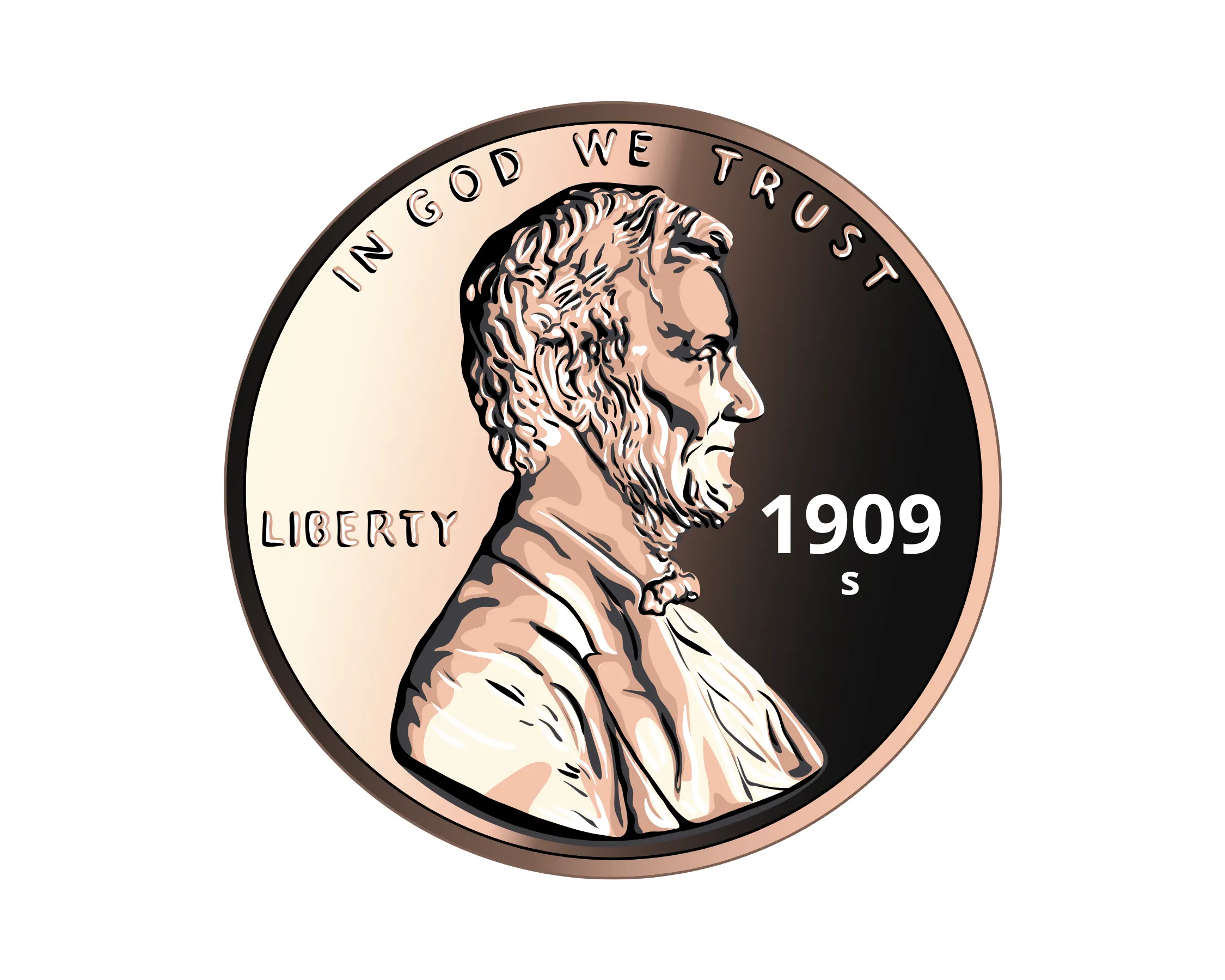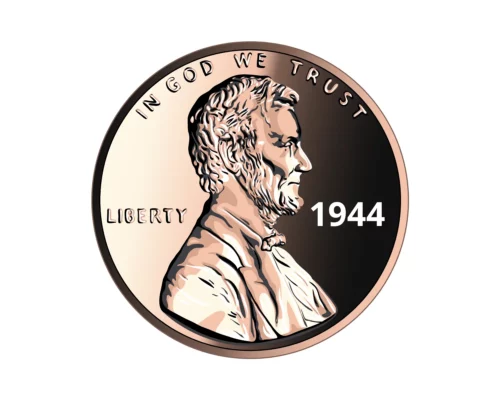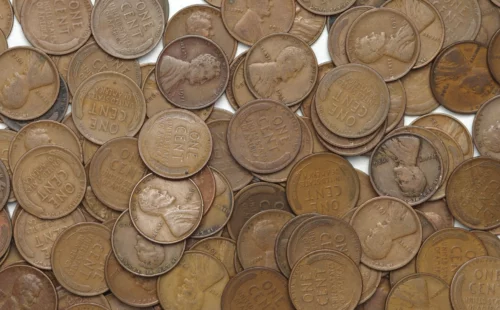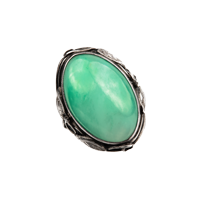1909-S VDB Penny Value
The 1909-S VDB penny is one of the most popular and valuable American coins. The coin was designed by Victor David Brenner, and it features a bust of Abraham Lincoln on the obverse and a wheat stalk on the reverse. The coin was minted at the San Francisco Mint in 1909, and only 484,000 were produced. The low mintage combined with the coin’s high quality makes it one of the most desirable Lincoln wheat cents. The 1909-S VDB penny is worth anywhere from several hundred dollars to over $1,000, depending on its condition. Experienced collectors will often pay a premium for high-grade examples of this rare and historic coin.
1909-S VDB Penny
The 1909-S VDB penny is one of American history’s most iconic and recognizable coins and is known as a key date among American coinage collectors. The coin was designed by Victor D. Brenner and popularized by President Theodore Roosevelt, who saw the coin as a symbol of American progress. The obverse of the coin features the profile of President Abraham Lincoln, while the reverse bears the image of a wheat stalk, representing the country’s agricultural heritage. The coin was minted at the San Francisco Mint and quickly became popular with the public. Despite its popularity, however, the coin was not without its critics. Some people felt that the VDB initials were too prominent and detracted from Lincoln’s image. As a result, the coin’s production was halted in 1909 and was not released into circulation until 1910. Today, the 1909-S VDB penny is highly sought after by collectors and considered one of the most valuable coins. While not as rare or valuable as some mintage errors within the Lincoln wheat cent series from 1909-1958, it is one of the most valuable a non mintage error coins within the wheat penny series.
Who Was victor david brenner (V.D.B.)
Victor David Brenner was an American sculptor best known for his work on the Lincoln cent. Born in 1871 in Shavli, Lithuania, Brenner immigrated to the United States with his family at nine. He began his artistic career as a painter and lithographer, but he soon turned to sculpture. Brenner first gained national attention for his medal of President Theodore Roosevelt, which he designed in 1906. Four years later, he was commissioned to create a new design for the one-cent coin. The result was the Lincoln cent, which featured a portrait of the 16th president on the obverse and a rendition of the Lincoln Memorial on the reverse. The coin was released in 1909 and quickly became one of the most popular coins in circulation. Brenner continued to produce sculptures and medals throughout his career, but he is best remembered for his contribution to American coinage.
What wheat pennies have VDB on them
1909 was the first year that wheat pennies were minted, and the VDB initials of Victor David Brenner can be found on the reverse side of many of these coins. Brenner’s initials were removed from the coin after 1909, but they can still be found on some coins from that year. In addition to the VDB coins, there are also a few other 1909 wheat pennies that are considered to be rare and valuable. These include the 1909-S penny, which was minted at the San Francisco Mint, and the 1909-O penny, which was minted at the New Orleans Mint. While most 1909 wheat pennies are worth only a few dollars, these rare coins can sell for thousands of dollars.
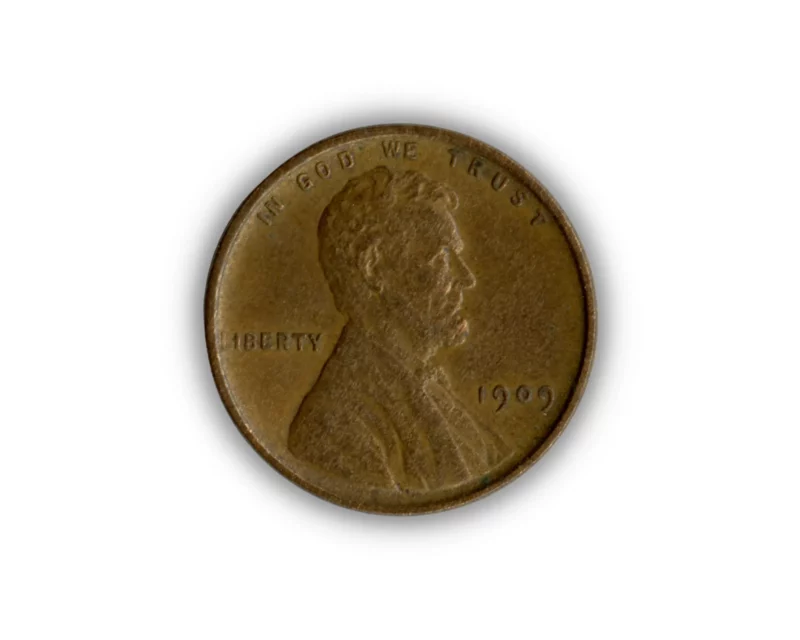
Front of a 1909 VDB wheat penny
Where is the VDB on a 1909 penny
The VDB is near the bottom of the reverse of the coin. It is easy to spot because it is raised above the surface of the coin. A wreath surrounds the VDB as well, if you look closely.
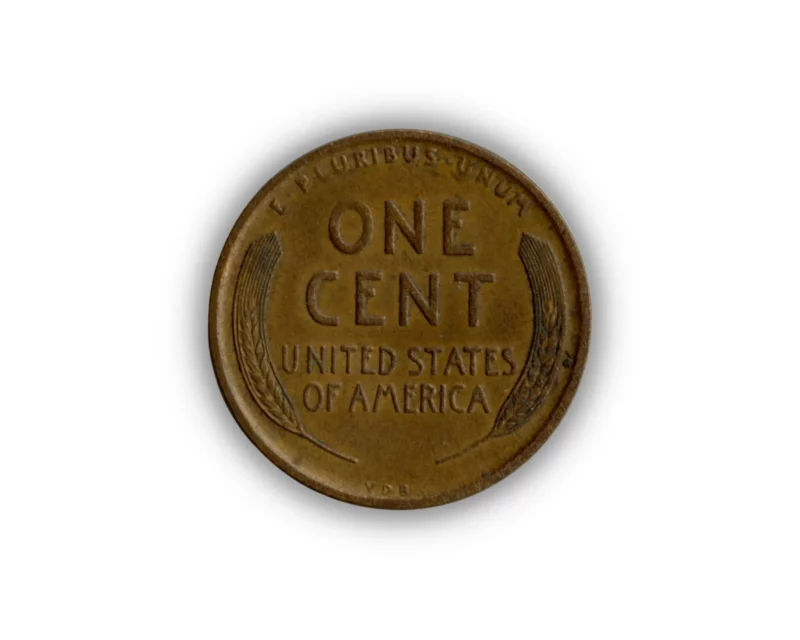
Reverse of a 1909 VDB wheat penny
What wheat pennies have VDB on them
The 1909 first-year issue of the Lincoln Wheat Penny is the only year that featured the VDB on the coin’s reverse. Not all 1909 pennies include the 1909 designation. The 1909-S VDB is the rarest of the variety of the 1909 cent.
Types of 1909 Wheat Pennies
There are several types of 1909 wheat pennies, some with and without the VDB mark and related mint markings. The 1909 VDB penny from the Philadelphia mint with the designer’s initials and the 1909 wheat penny minted in Philadelphia with no initials is considered not to include a mint mark. The 1909-S wheat penny with the San Francisco mint stamp and the VDB on the reverse is included in the San Francisco mint category, as is the 1909-S wheat penny without initials on the reverse.
1909 VDB penny value no mint mark
The 1909 VDB penny with no mint mark is the most common of the 1909 wheat pennies. 27,995,000 of them were minted. The value of a 1909 Lincoln penny ranges between $1-$9, although mintage errors, condition, and color of the penny can radically change these values.
What's a 1909 VDB worth
A 1909 VDB coin, in average-fine condition, has a value between $3-$16, similar to the value of a standard 1909 wheat cent. This price range is not to be confused with a 1909 S or the 1909-S VDB, which are worth far more. However, even 1909 VDB coins can be worth well more than their average price range based on the color red, red-brown, and their condition. If you are unsure of the potential value, it may be advised to have your copy graded by a reputable grading agency like PGCS.
1909-S VDB penny uncirculated
A 1909-S VBD cent in uncirculated condition has a minimum average value of $1000 and above. It may be advised to have a coin like this graded if you are unsure of the exact condition and color, as some versions of these coins can be worth tens of thousands of dollars. $117,000 was paid for a perfectly preserved 1909-S VDB Cent, MS67 Red, in 2014.
Highest Grade 1909-S VDB
Grading agency PGCS has 31 grades it can assign to a coin from ungradable to MS70+. The most money ever paid for a 1909 VDB was a 1909 VDB Matte Proof Lincoln, PR67+ Red and Brown, and this MS67. However, the highest-graded 1909-S VDB was a 1909-S VDB Cent, graded MS67, the second most valuable 1909 lincoln cent sold.
1909 VDB penny error
The 1909 VDB penny is one of the most famous coin errors in American history. The story goes that the designer of the coin, Victor David Brenner, included his initials on the reverse side of the coin. However, the appearance of the initials was thought to be too prominent. The U.S. Mint quickly released a new version of the coin without the initials, but not before a few thousand of the original coins had been circulated.
How many 1909-S VDB pennies are left
With an original mintage of 484,000 and survivorship of ungraded coins far below that figure, grading agencies estimate that there are approximately 5,000 copies of the 1909-S VDB graded MS60BN (brown) or better, 6,000 copies graded MS60RB (red-brown) or better, 5,000 copies graded MS60RD (red) or better, with 3,000 of these coins graded MS65RD or higher. Indeed, making graded versions of these coins rare among examples of American coinage.
What is the most valuable VDB penny?
The most money ever paid for a VDB penny was $258,500 in 2014 for a 1909 VDB Matte Proof Lincoln, PR67+ Red, and Brown. It was the highest graded copy offered at the time for that coin. In addition to this price, $117,000 was paid for a perfectly preserved 1909-S VDB Cent, MS67 Red, in 2014. In January 2022, $108,000 was paid for a similar 1909-S VDB Cent, MS67 Red. While not the million dollars figure some mintage error coins bring at auction, consider this is a coin with a face value of one cent.
How can you tell if you have a 1909 VDB penny
Determining if you have a 1909 VDB coin is easy. The VDB is located on the coin’s reverse, near the bottom. It is easy to spot because it is raised above the coin’s surface. Looking closely, you will also see that a wreath surrounds the VDB. Other than the VDB, there are no other distinguishing features on a 1909 penny. So, if you have a penny minted in 1909 and do not have the VDB, then it is not an actual 1909 VDB penny.
1909-S VDB penny counterfeit
The 1909-S VDB penny is one of the most counterfeited coins in circulation. Many fakes can be distinguished by their use of parallel serifs on the lettering, as opposed to the more curved serifs used on the genuine article. In addition, the VDB initials are slightly slanted on the counterfeit coins, while they are level on the real ones. While these are some of the most obvious differences, experienced collectors can also spot other subtle discrepancies that can help to identify a fake 1909-S VDB penny. However, the best way to avoid being deceived by a counterfeit is to purchase 1909-S VDB pennies only from reputable dealers. Comparing copies is also a great way to learn. Review known examples of the coin online and check for similarities and differences. With careful examination, it is possible to find authentic 1909-S VDB pennies, but it is important to be cautious when making any purchase.
1909 VDB Penny Composition
The 1909 VDB penny comprises 95% copper and a 5% mix of tin and zinc.
1909 VDB Penny Weight
The 1909 wheat cent weighs 3.11 grams.
More Read and information
Author, coin specialist, and numismatist James Bucki has written many excellent articles on coins and pennies. He writes for The Spruce Crafts. Professional grading service PCGS is a great resource and performs world-class grading services for coins. NGC also provides expert coin guides and grading services. They also offer a world-class price guide for graded coins.

